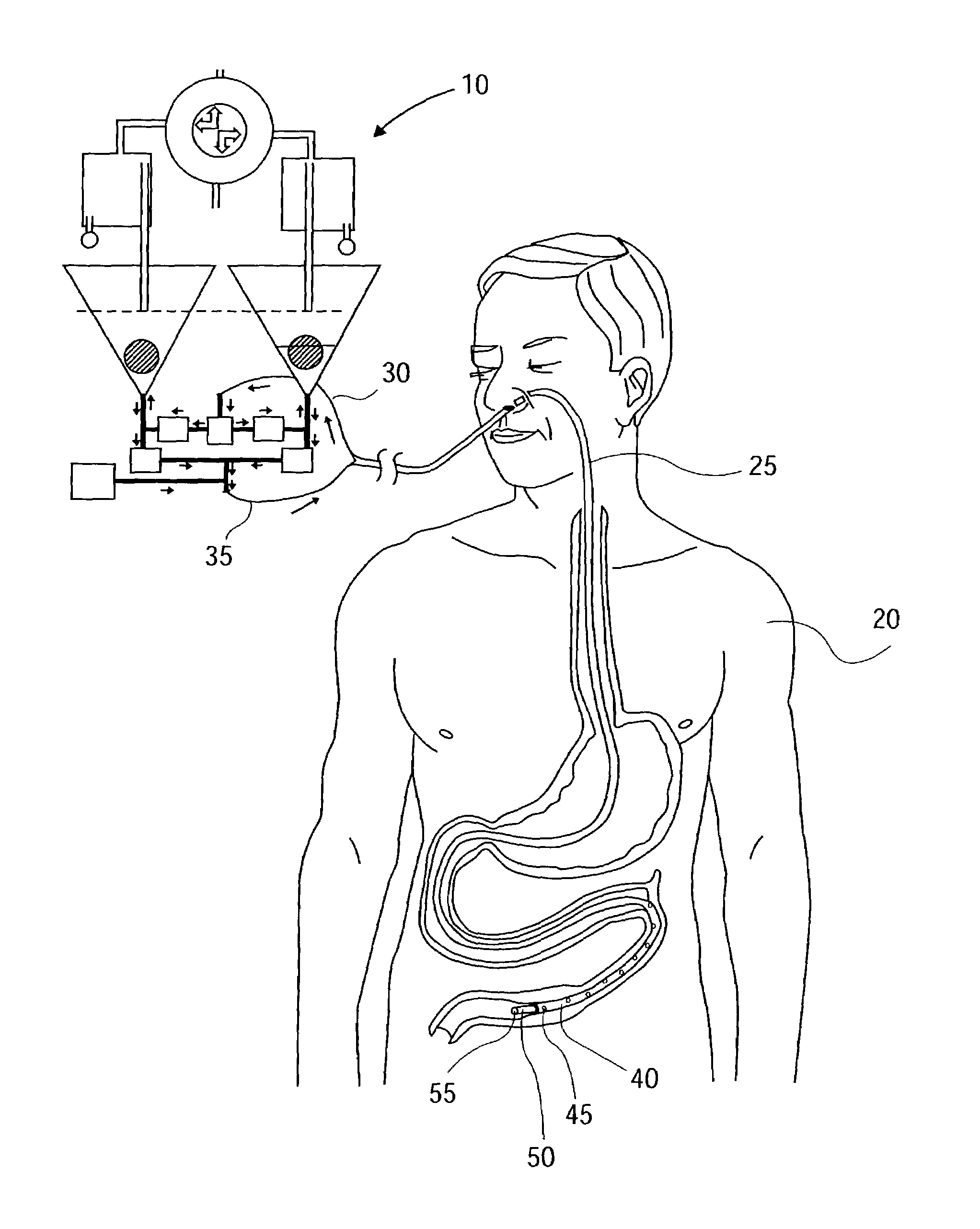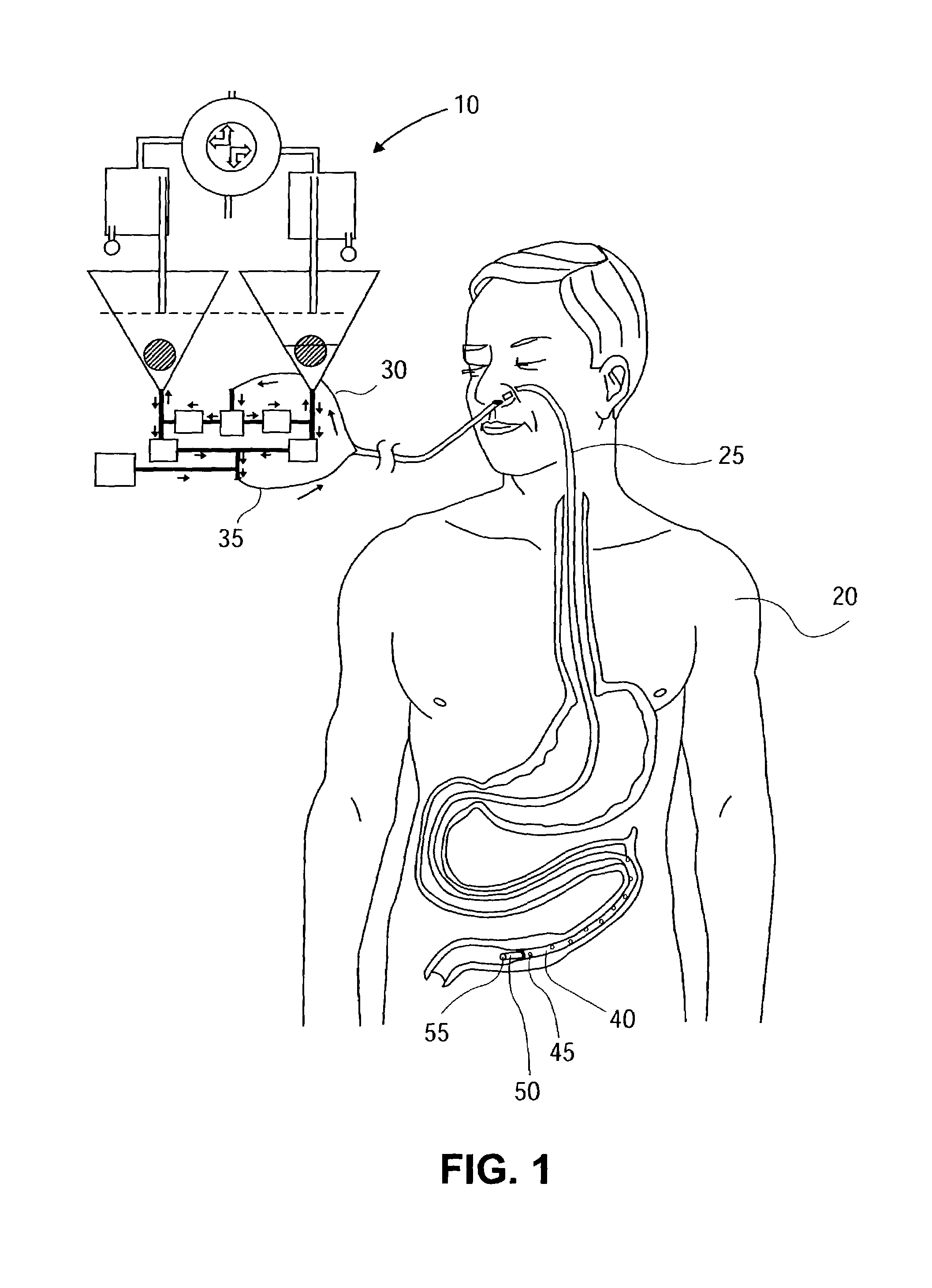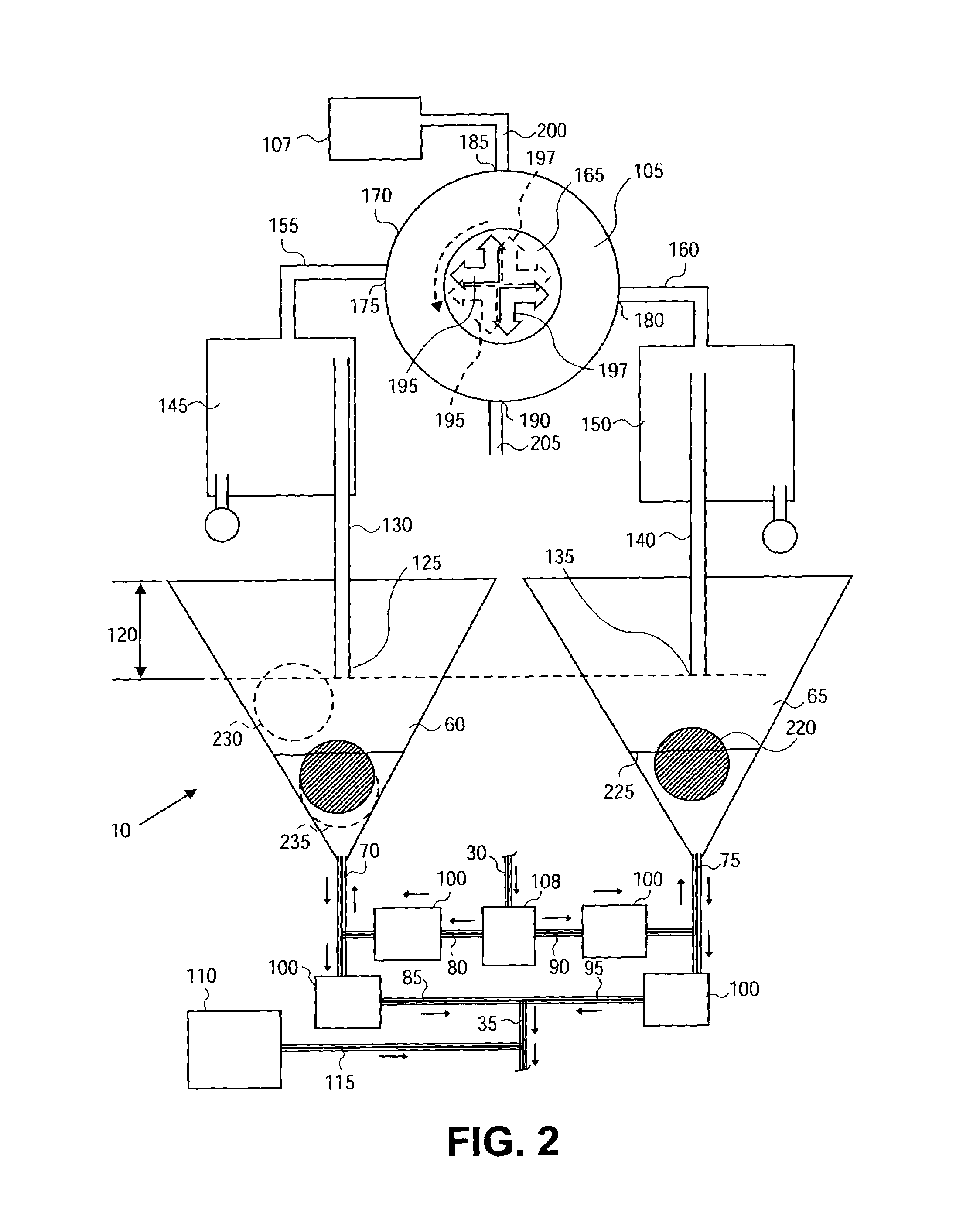Continuous feeding and decompressing device and method
a technology of decompression device and feeding tube, which is applied in the direction of suction device, intravenous device, other medical devices, etc., can solve the problems of affecting the efficiency of feeding tube, and affecting the ability of gastro-intestinal function, so as to improve the efficiency of absorption, promote greater absorption and flow, and reduce the tendency to dehydration
- Summary
- Abstract
- Description
- Claims
- Application Information
AI Technical Summary
Benefits of technology
Problems solved by technology
Method used
Image
Examples
Embodiment Construction
[0029]As discussed above, embodiments of the present invention relate to devices and methods for feeding and decompressing in a gastro-intestinal tract. As shown in FIG. 1, an aspirate storing and refeeding device 10 is used to feed and decompress in a gastro-intestinal tract 15 of a patient 20. To this end, a combination feeding and aspirating tube 25 is inserted into the gastro-intestinal tract 15 through the nose and esophagus. Other ways of accessing the gastrointestinal tract include inserting the tube through the abdominal wall directly into the jejunum, or directly into the stomach and intraluminally to the jejunum. As can be appreciated from FIG. 1, the combination feeding and aspirating tube 25 is a double lumen tube and comprises an aspiration channel 30 and a feeding channel 35 for handling flow in opposite respective directions. Combining these channels 30, 35 into a single composite tube 25 has the advantage of reducing bulk and complexity in the inserted portion of the...
PUM
 Login to View More
Login to View More Abstract
Description
Claims
Application Information
 Login to View More
Login to View More - R&D
- Intellectual Property
- Life Sciences
- Materials
- Tech Scout
- Unparalleled Data Quality
- Higher Quality Content
- 60% Fewer Hallucinations
Browse by: Latest US Patents, China's latest patents, Technical Efficacy Thesaurus, Application Domain, Technology Topic, Popular Technical Reports.
© 2025 PatSnap. All rights reserved.Legal|Privacy policy|Modern Slavery Act Transparency Statement|Sitemap|About US| Contact US: help@patsnap.com



